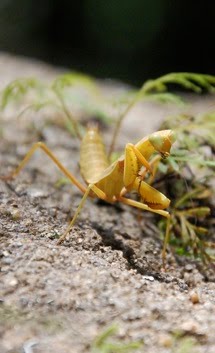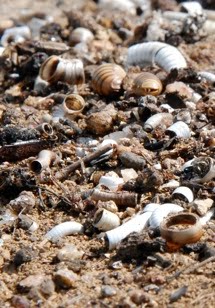
[Lemurs behind bars. No this isn't lemur jail; this is the zoo. Thanks to some very generous donations I was able to take the 3rd, 4th and 5th graders from Akany Avoko children's home on a field trip to national zoo in Antananarivo, Madagascar. It's close to us but probably a bit of a haul for your class (unless your teacher is Ms. Frizzle). Don't worry though. Read on and join us for a virtual field trip instead.]

Right. Every one off the bus and line up at the gate. Anyone have to pee? I'm not stopping later, so unless you want to spend the field trip bouncing around and walking funny, go now.
Timmy! Stop that!
"But you said go now."
Ok, Timmy gets an F for the field trip, but the rest of you still got a shot at an A. Let's head out.
Any questions first?
"Can we see the bears?"
No. There are no bears.
"Can we see the lions?"
No. There are no lions.
"Can we see the hippopotamuseseseses?"
No. There are no hippos.
Yes, Becky?
"Mr. Lebo, are you sure we're at the zoo?"
Notice all the cages and souvenirs? Yes, we are most certainly at the zoo, but this zoo only has animals from Madagascar and there are no bears, lions or hippos here. And Becky?
"Yes, Mr. Lebo?"
You get an F for the field trip now too.
"But I...I just asked a quest--"
Don't push it. One more word and you'll get a G instead.
"But I don't think there even is such a thing as a G?"
"Okay, a G minus then. Any more questions?"

This zoo is a marvelous place. Dozens and dozens of wonderful animals that can only be found here on the Great Red Island of Madagascar. Hundreds of out-of-this-world endemic plants with amazing adaptations to survive harsh and special climates.
All outstanding things you may even get a chance to see after you stand here and listen to me yak on and on about lemurs for while.
"But we've already listened to you yak on and on about lemurs before."
What did you say Becky?
"Uh...I said, 'But we have already had the wonderful opportunity to listen your incredible and amazing facts about lemurs'."
So you already know they aren't monkeys?
"Yes."
You already know they are the oldest primates in the world?
"Yes. They are our great-great-great-great-great-great-great-great-great-great-great-great-great-great-great-great-great-great-grandparents."
Excellent. But I think you missed a great.
But there is one thing new to learn. How they got to Madagascar in the first place.
"Fine, but we can see some actual lemurs after you're done talking?"
Certainly. But Becky?
"Yes?"
You now have an H.
Here we go. Raise your hands. How do you think Lemurs got to Madagascar? Bobby?
"They swam."
Nope. Lemurs can't swim. So-Ling?
"When my mom wants to go somewhere, she uses her frequent flyer miles."
Is your mom a lemur?
"No."
That's right, because lemurs can't fly.
Alright, we'll come back to how they got here in a bit. First, let's figure out how here got here.
Madagascar is the oldest island in the world. But it is not as old as the Earth. Take a look at this globe I just happen to have in my pocket. See all the lovely continents?
"Yes."
Well those big hunks of rock and dirt are a lot like Willy.
"They're allergic to peanut butter and don't comb their hair?"
No, they can't sit still.
"Oh."
And, by the way, has anyone seem Willy lately?
"He said he was going to go pet the crocodiles."
Fine, now back to the continents. The continents and plates of the crust are floating on top of molten rock that boils up and pushes them around. Sometimes they get pushed apart and sometimes they get smooshed together into supercontinents.
"Ooh! Does that mean they can fly?"
Not that kind of super. Two-hundred and fifty million years ago when crocodiles like the ones that are now digesting Willy first showed up, there was one big supercontinent called Pangea. Madagascar was just a hunk of land in the middle; it was not an island. And even about 100 million years later or so when Africa broke free it wasn't an island either, because Madagascar was still holding on to India.
"Did it like curry? I like curry."
Do you also like failing grades, Ben? Madagascar, the island, was finally born about 70 million years ago when it kissed India goodbye and set off on its own. It wasn't completely on its own though. There were all kinds of plants and animals living on it, but something was missing. There were no lemurs anywhere. The lemurs were left behind back in India and Africa and other places too.
"Mr. Lebo is this story ever going to end?"
In a bit, Becky. And congratulations you are now the first student in elementary school history to earn a J.
So, we are still left with our first question. How did lemurs ever end up on Madagascar in the first place?
Grab a map, turn your brains on and come up with some ideas. In the meantime, I'm going to go check on Ben. I hope the crocodile isn't choking on him.
I really like crocodiles.
[Note to students and teachers who just endured part 1 of the virtual field trip to the zoo: Give the challenge a whirl and send me your ideas about how lemurs came to Madagascar. Try and use your brain and not Google. Give it a shot. Get it wrong. Who cares? Just leave a comment with your best thoughts. Next week we will finish the virtual field trip and find out the real answer. We will also find out how low Becky's grade can actually get.]

Akany Avoko children enjoying the non-virtual tortoise during their non-virtual field trip to the zoo. There used to be thousands of these on the island (tortoises, not Akany Avoko children), but now they are extinct. This one is a similar species from a neighboring island group.

These are the most popular animals at the zoo. Lemurs aren't such a big deal when you grow up in Madagascar, but camels sure are. These were actually gifts from the leader of Libya in northern Africa.

The lucky and grateful kids. Thank you so much to the all the wonderful donors who helped raise money for this and future field trips.







































